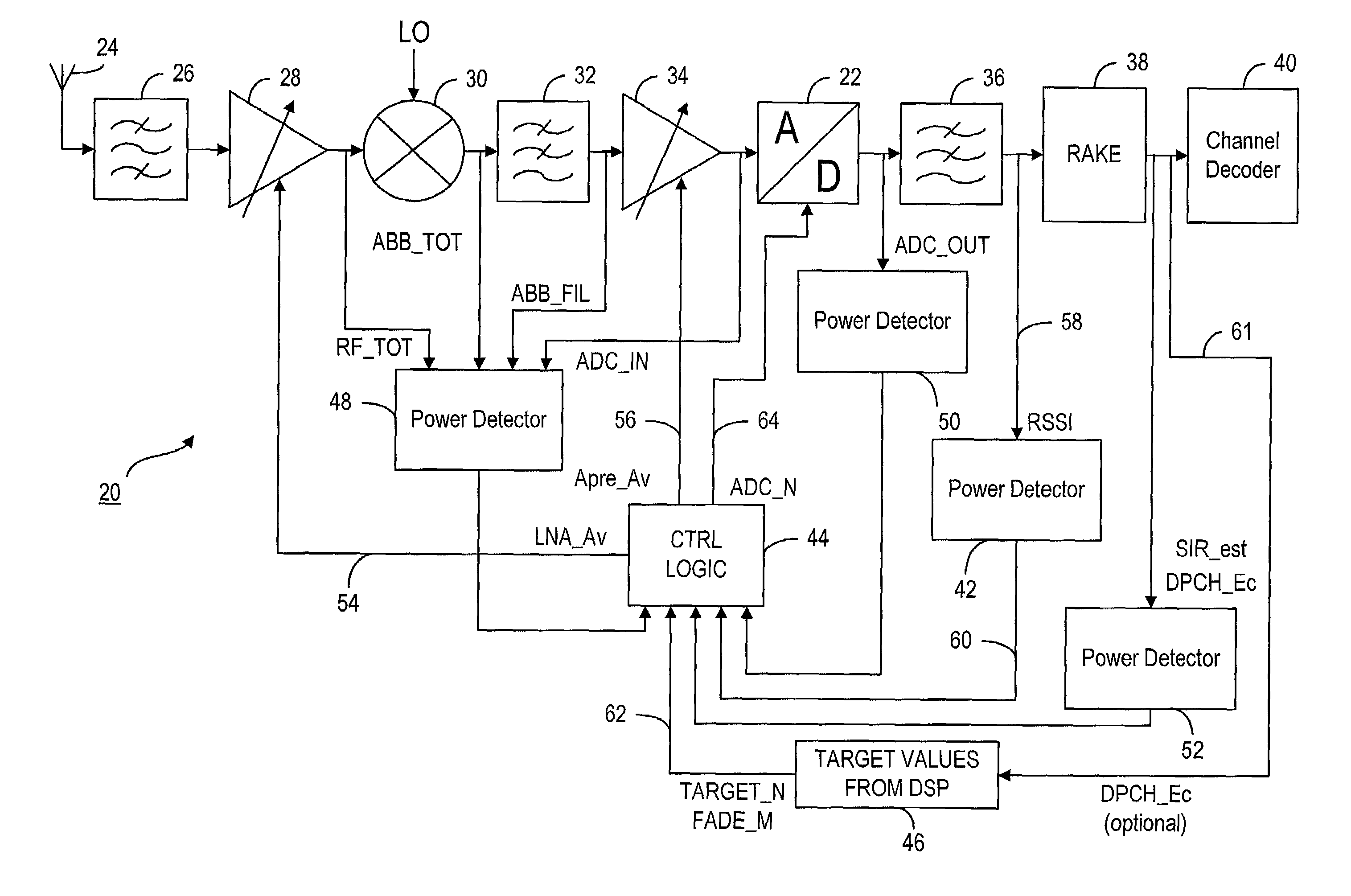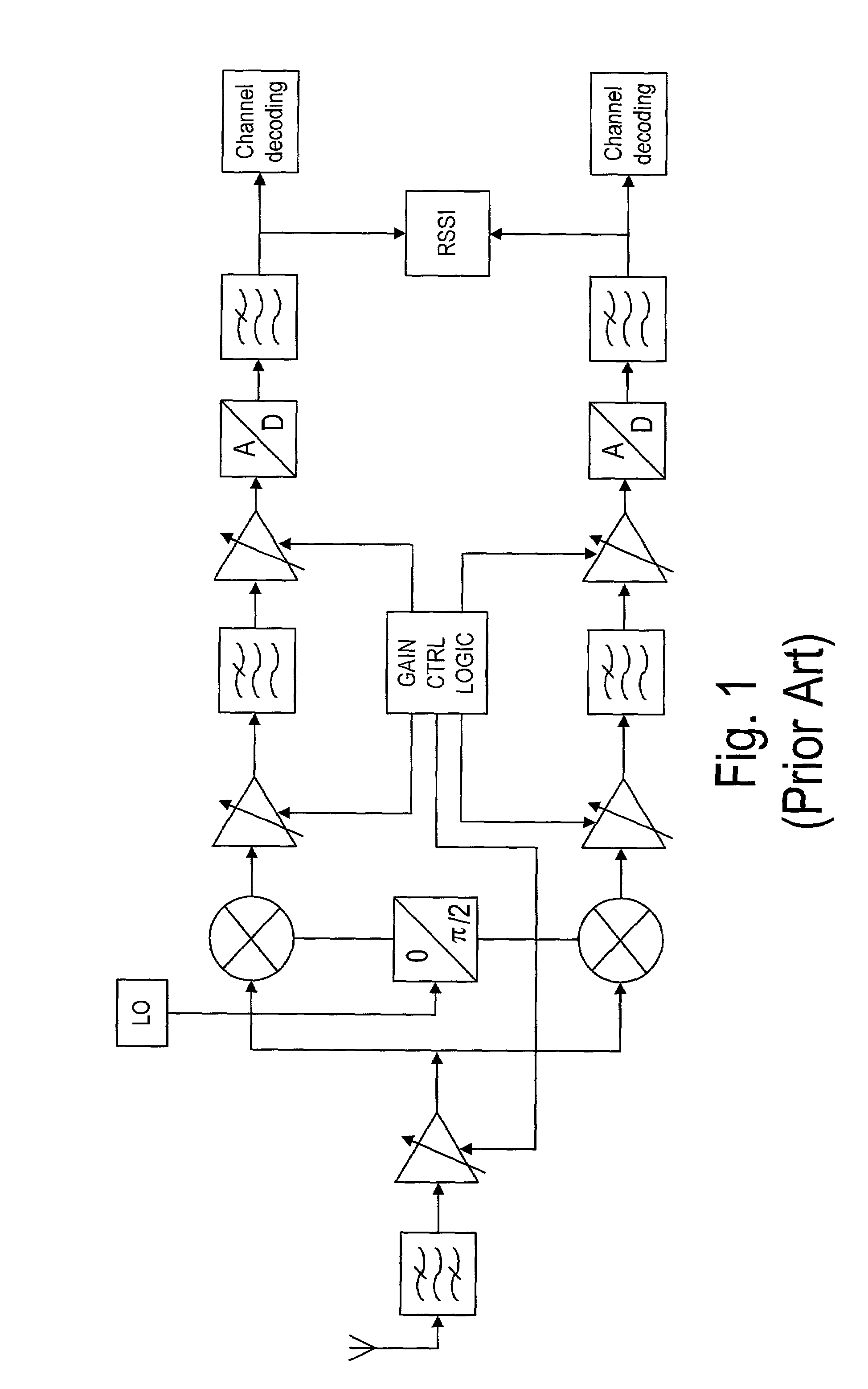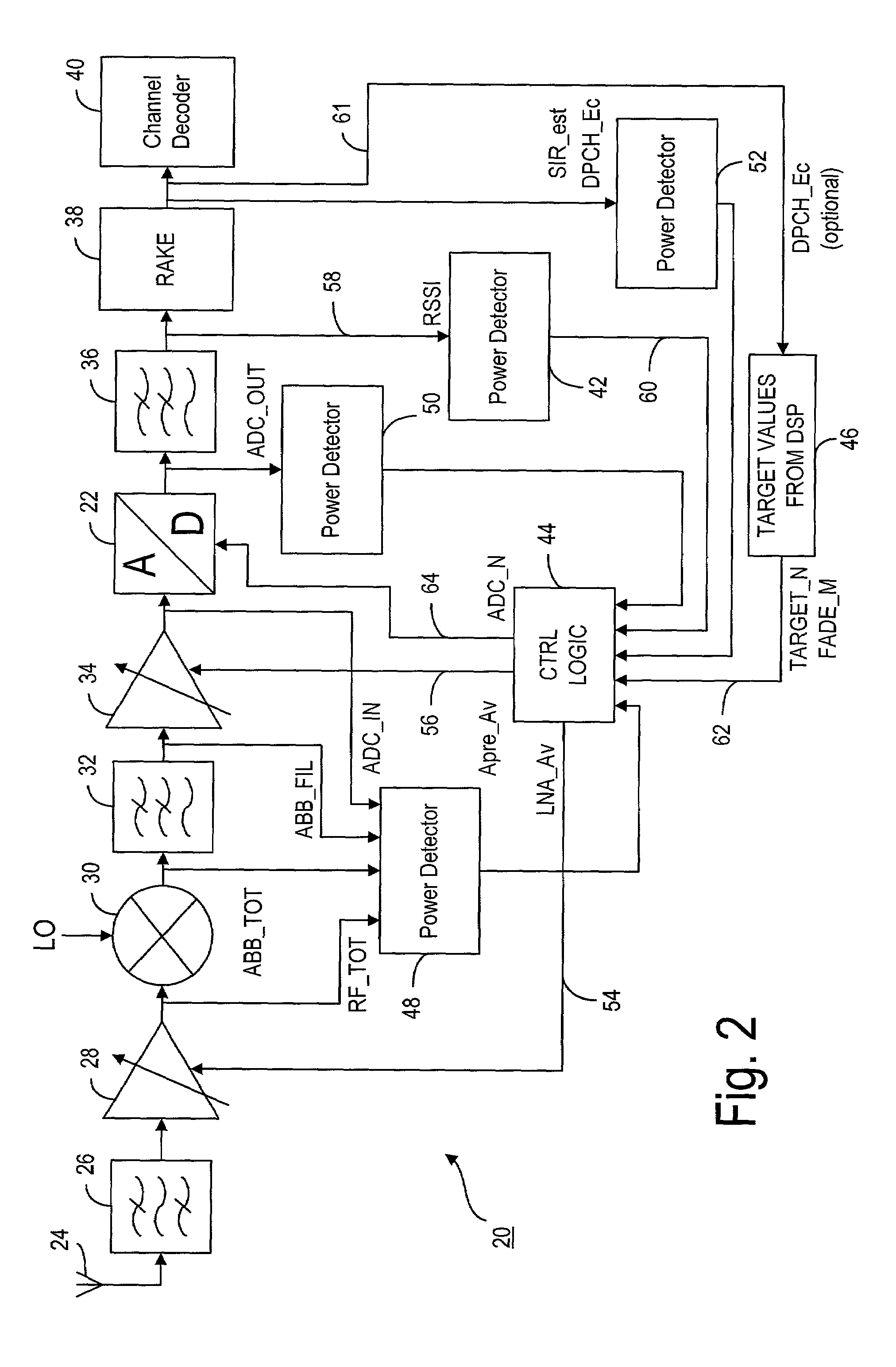Method and apparatus for continuously controlling the dynamic range from an analog-to-digital converter
- Summary
- Abstract
- Description
- Claims
- Application Information
AI Technical Summary
Benefits of technology
Problems solved by technology
Method used
Image
Examples
Embodiment Construction
Introduction
[0024]The acronyms used throughout the figures and the associated discussions are presented in Table 1.
[0025]FIG. 2 is a block diagram of a radio receiver 20 with an analog-to-digital converter 22 (ADC) having dynamic range control according to the present invention. It shows a radio frequency receiver with a CDMA processing block (RAKE) 38 which is shown separately from other channel decoding functions. CDMA signal processing techniques other than RAKE can also be used in the digital architecture. Radio receiver 20 has one downconverting stage and can have several intermediate frequencies. It digitizes the signal received at antenna 24 from baseband, from any intermediate frequency, or directly from the incoming radio frequency of the associated radio frequency channel. The receiver can have in-phase and quadrature branches similar to the in-phase and quadrature branches shown in FIG. 1, which is block diagram of a conventional direct conversion receive...
PUM
 Login to View More
Login to View More Abstract
Description
Claims
Application Information
 Login to View More
Login to View More - R&D
- Intellectual Property
- Life Sciences
- Materials
- Tech Scout
- Unparalleled Data Quality
- Higher Quality Content
- 60% Fewer Hallucinations
Browse by: Latest US Patents, China's latest patents, Technical Efficacy Thesaurus, Application Domain, Technology Topic, Popular Technical Reports.
© 2025 PatSnap. All rights reserved.Legal|Privacy policy|Modern Slavery Act Transparency Statement|Sitemap|About US| Contact US: help@patsnap.com



